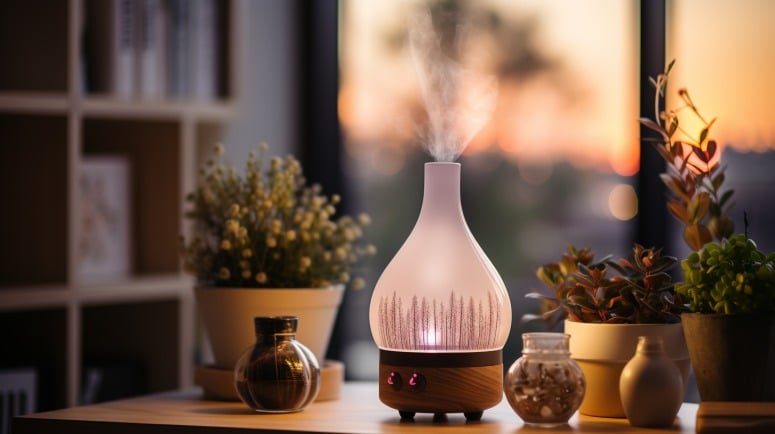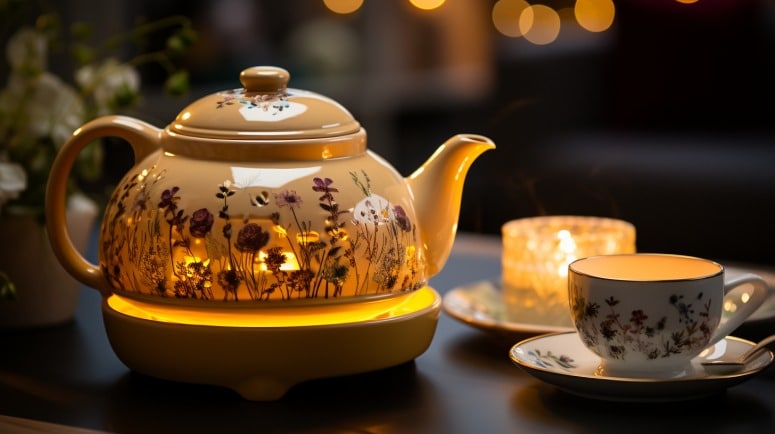Tea strainers, a name synonymous with the art of brewing the perfect cup of tea. Serving as a beacon of flavor and convenience in the world of tea lovers, they truly elevate the tea-drinking experience. But is there more than meets the eye? This guide traces the journey of tea strainers from their humble origins to becoming an indispensable tool. Delve into the secrets of brewing tools, appreciating the artistry behind your everyday cup of warmth. From the classic strainer to modern infusers, let’s journey together down this fragrant path, one brew at a time.
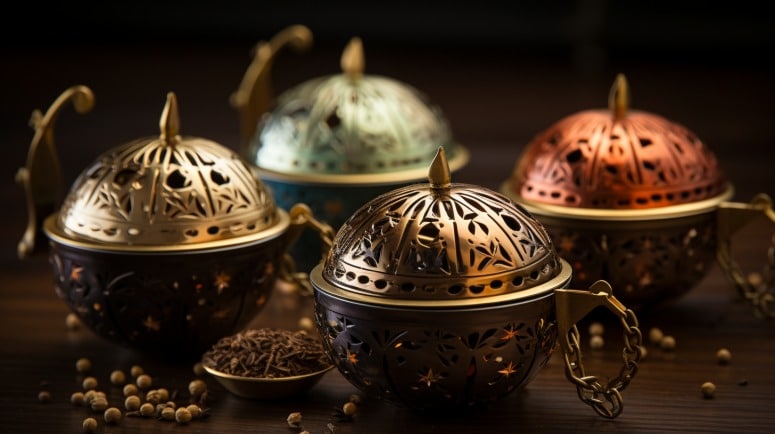
Table of Contents
The Best Tea Strainers Breakdown: The Joy of Brewing Tea
I get it, tea lovers! Hunting for that PERFECT cup of tea can sometimes feel like chasing the Loch Ness monster. Almost everybody has heard of it, yet nobody quite knows how to get it, right? But today, we are putting an end to that mystery. Grab your detective hats and sip on your current, soon-to-be-old-favorite brew, and let’s unravel this mystery one strainer at a time!
First things first, tea strainers. For those of us blessed with the luxury of time, and the appreciation for an authentic tea experience, tea strainers are our most trusted companions. A tea strainer, with its mesh-like structure, effectively strains out the loose tea leaves, serving you a crisp, clean tea devoid of floating debris.
Why use tea strainers? One word – “Flavor”. Loose leaf tea is often of superior quality than your regular bagged tea. Plus, it’s an eco-friendly alternative. Heck, you can even recycle used tea leaves as a natural fertilizer or air freshener!
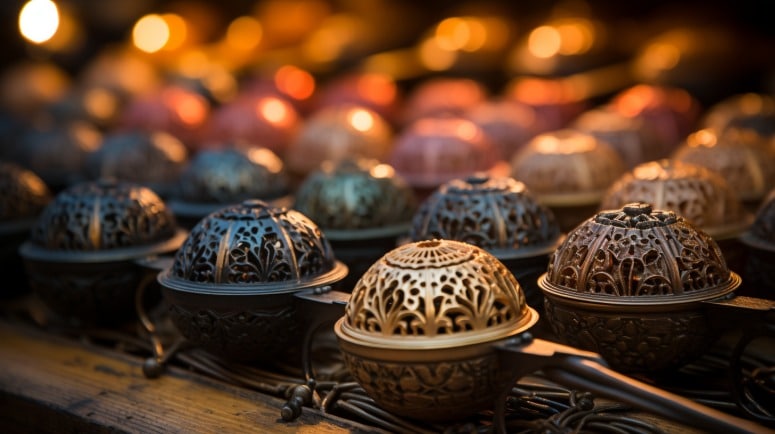
Now, onto the stainless steel strainers! These are your “Iron Man” in the world of tea strainers. Suitable for use in both hot, cold or lukewarm water, resistant to rust, and pretty easy to clean. Remember investing in stainless steel strainers will be like getting front row seats at the opera (always the best!).
What if you fancy a single cup of tea in the odd hours of night? No worries! The long handle tea strainers come to the rescue. Plop it into your favorite mug, let it infuse the water with flavors of your chosen tea leaves, and pull it out – all without burning your fingertips. Now that’s what I call a tea-reffic idea!
But alas, what’s life without choices, right?
Luckily, the universe of tea accessories offers us a plethora of choices. Basket infusers, tea balls, you name it! We even have tea strainer balls designed beautifully for all tea lovers. Yes, tea and aesthetic can coexist!
Remember folks, selecting your tea strainer should not just be a toss-up. It’s an art. You’ve got to identify what suits your needs, matches your lifestyle, and most importantly, brings a smile to your face with every brew!
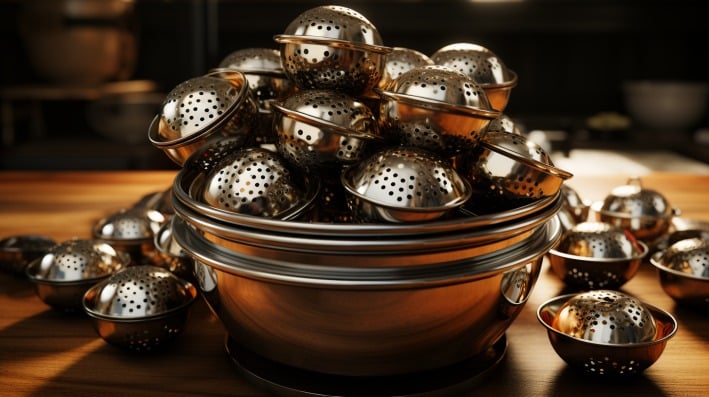
Choosing the Correct Tool: Tea Strainer versus Steeper versus Infuser
We’ve journeyed through the realm of tea strainers, but if you think that was all the world of tea brewing tools had to offer, hold on to your teapots! Brace yourselves as we plunge into the thrilling choices of brewing your favorite tea. It’s time to get up close and personal with tea strainer, steeper, and infuser.
Enchanting names, aren’t they? But when faced with these tools in the aisle of a store, can you spot the difference? Let’s spill the tea on that!
Tea Strainers
Tea strainers have been the classic sidekick for tea drinkers. Imagine perfect afternoons with granny, her lovely old teapot, and the trusty tea strainer gracing the rim of your cup. Staring at the tiny leaves captured in the strainer, didn’t you ever wonder about the distant tea gardens they must’ve journeyed from? So charming!
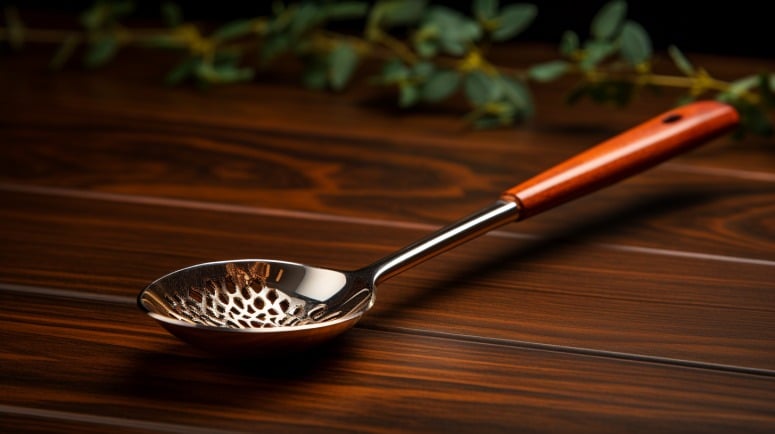
Tea Steepers
Tea steepers, on the other hand, are for those of us who enjoy seeing our tea leaves dance. Place the leaves, let them steep, and when that rich color and aroma fill your senses, it’s done—effortless brewing, delivering a savage flavor punch. Just remember, steepers need elbow room to unlock the magic, so go easy on the quantity of leaves.
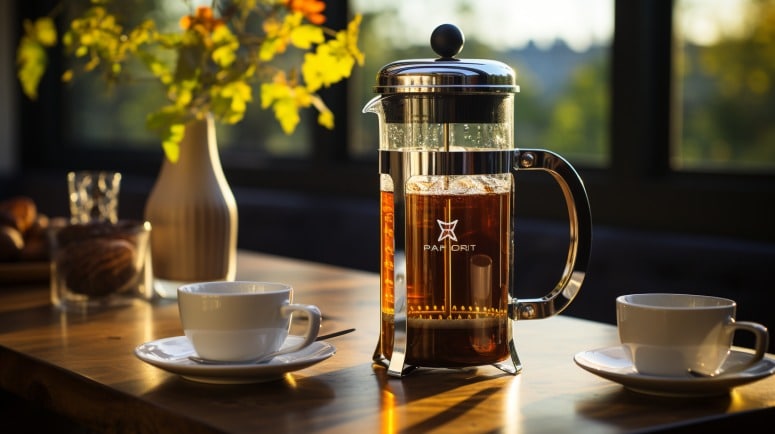
Tea Infusers
Darting out from the shadows, let’s meet the tea infusers who love to submerge in the steeping process completely. They are fantastic for single servings. You know, for those late-night book reading sessions when everyone’s asleep, but you and your cup of tea? Even in such solitude, the infuser keeps the tea leaves from getting in your way.
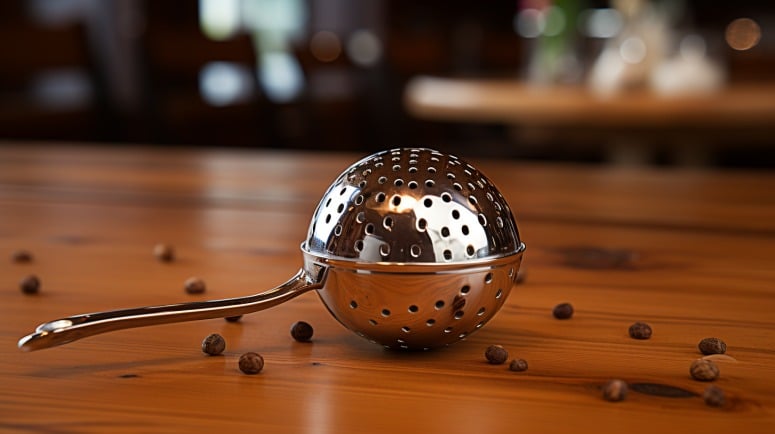
So, what’s the takeaway? Each tool has its own melodrama, offering unique ways to react to tea leaves, water, and temperature. Some may prefer the charm of the classic tea strainer, while others might gravitate towards the boldness of the steeper or the de facto convenience of the infuser. Ultimately, you’ve got to sip it to believe it!
Unmasking the Perfect Brewing Tool
The life of a tea lover is not devoid of dilemmas – Oolong or Darjeeling, green or herbal, tea strainers or infusers, to name a few. Today, we’re gonna tackle these brewing tool queries head on.
“What is the difference between a tea strainer and tea infuser?”
As we mentioned earlier, tea strainers are your traditional heroes, dealing primarily with offloading loose tea leaves from your teapot. Infusers, however, are the modern, more involved character; they dive right into the pot or cup, directly assisting the steeping process. In the universe of infusers, ‘be there or be square’ is the motto!
“What can I use instead of a strainer for tea?”
Don’t have a strainer at hand? Fear not, my brave tea soldiers. Say hello to the humble kitchen sieve, or maybe even a coffee filter could pinch-hit. But do remember, improvisation can slightly alter the intricacies of flavor. It’s part of the tea adventure!
“What tea infuser should I use?”
The golden rule – choose based on your brewing habit. Solo tea drinker? A mug infuser or tea steeping ball might be your jam. For larger quantities, a pot infuser is the way to go.
“Can you strain tea without a strainer?”
Heck yeah! Ever heard of ‘free brew’? Just add tea leaves directly into the pot, let them do their cha-cha-cha, and pour it out carefully. Some leaves might crash your tea party, but hey, isn’t that part of the fun?
Remember, fellow tea explorers, each tool, each method, whispers secrets to the water in different ways. It’s a dance of flavors, really. Curious? Excited? I sure am. Let’s continue exploring together, ’cause this teaventure is far from over!
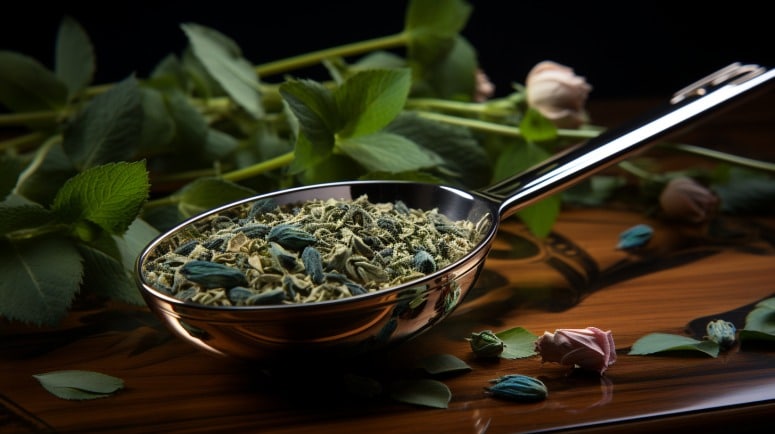
The Role of Vinegar, Baking Soda and Commercial Detergents in Cleaning a Tea Strainer
Alrighty, my fellow tea enthusiasts. We’ve steeped, brewed, discussed and drank tea. I can almost picture the satisfied smile on your lips, the tranquility in your eyes… But there’s still unfinished business. Our trusted tea tools, the strainers, infusers, and steepers, have performed their duties. It’s time we take care of them!
Home, sweet home: the sanctuary of all DIY solutions and hacks. Let’s dive right into your kitchen and unveil the simple cleaning routine for your tea tools.
First up, we summon the common household knight – vinegar! In a world full of stains, be a vinegar. Simply soak the tea strainer in equal parts water and white vinegar, leave it be for 15 minutes and voila! You will have a strainer looking as good as new. Trust me, nothing screams clean like a vinegar rinse!
But what about those pesky stubborn stains, you ask? Bring in the heavy hitter: baking soda! Apply a paste of baking soda and water on the stains, let it stay for 15 minutes, scrub lightly using an old toothbrush, rinse it off – and the challenger stands defeated!
Moving on, for the day-to-day care routines, mild dish detergent will do the job just well. Soak the strainer in warm soapy water, give it a gentle scrub, rinse under running water and let it dry naturally. Easy-peasy!
And I hear your questions on dishwasher safety. Thankfully, most stainless steel tea strainers today are dishwasher safe! Just make sure to remove any tea residue before you pop it into the dishwasher.
Remember, taking care of your tea strainer not only keeps it hygienic, but it also sustains the flavor profile of your brews and prolongs the life of the tool. Because in the world of tea, we love and care, drink and share!
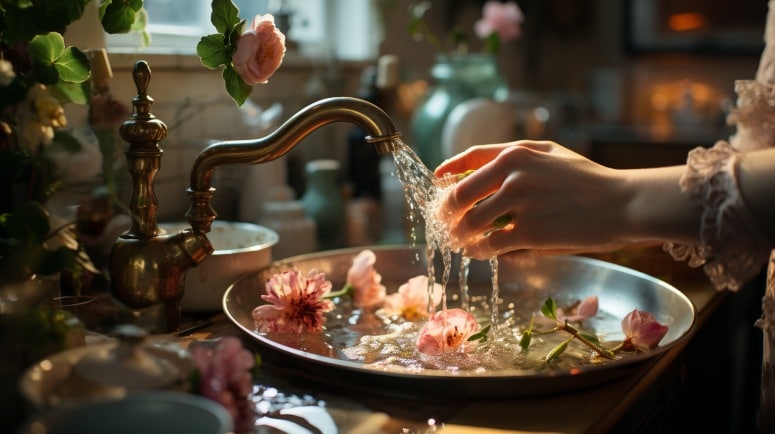
Brewing Revealed: How to use Tea Strainers and Other Tools
And here we are, tea lovers, at the threshold of the magical world of brewing. We’ve inspected the tools, talked about cleaning; now let’s take them for a spin. Remember, brewing is all about leaping into the arms of patience and welcoming her alluring aura. Ready? Set…Brew!
Tea Strainer
A tea strainer does a heck of a job, making sure your tea doesn’t come out looking like a swampy mess. Just place strainer over your cup, pour the brewed tea through it – it’s as easy as one-two-tea! Got options? Choose a long-handle tea strainer for a single cup and a larger strainer for full teapots.
Steeper
A steeper is our next flavorful secret weapon, is a leaf-to-water contact whistleblower. It ensures that every tea leaf gets personal space to unfurl, releasing all its flavors and oils. For it to work its charm, place the tea leaves inside, dip it into your teapot or cup, let it steep till the desired strength is attained, remove and enjoy.
Tea Infuser
This is the complete immersion expert. Just add your tea inside, immerse it into your hot water, let it mingle until you get your desired brew strength. The lid keeps the heat in and doubles as a drip tray.
Tea Strainer Balls
When it comes to tea strainer balls or infuser balls, they are tea’s answer to convenience. Add loose leaf tea into the sphere, close it, dip it into your mug, infuse, and when done, just remove it. Clean, quick and without a mess. It’s almost like brewing tea with a tea bag, but way more stylish and eco-friendly.
Before we wrap up, a pro-tip: Always pre-warm your cup or teapot. Why? It creates a hospitable environment for the brewing process. Simply rinse it with hot water before brewing your tea. Your tea leaves will thank you!
Every tool, each method, contributes nuances to your cup of tea. So take the plunge, experiment and find your sweet spot! Happy Brewing!
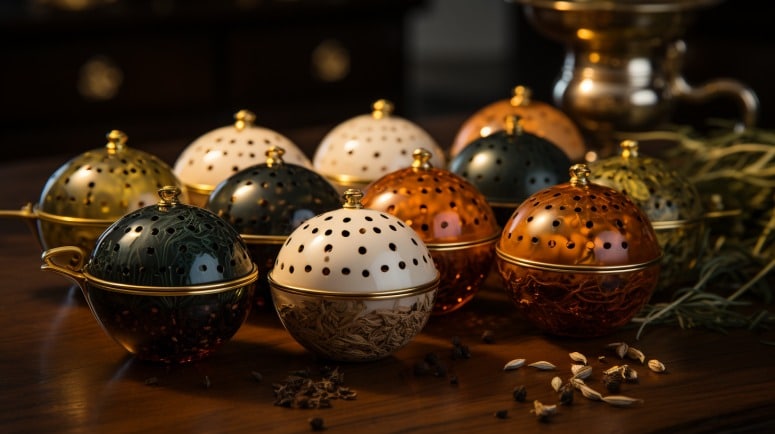
Tea Preparation Tips and Tricks for Best Flavor
Alright, folks, grab your notebooks – it’s time to unveil some insider secrets to coaxing the best flavors out of your beloved teas, shall we?
Tip 1: When using your trusty tea strainers, remember to give your beautiful loose leaves plenty of space. Crowding them might result in a subpar infusion – imagine trying to swim in an overcrowded pool!
Tip 2: Steeping time is crucial. Steep too little, and you land an underwhelming taste; overshoot, and you welcome bitterness. As a rule of thumb, white and green teas love a hot, not boiling dip for 1-3 minutes. Oolongs prefer 3-5 minutes, and the hearty black and herbal teas can take a good 4-5 minutes steep.
Tip 3: Patience, my dear friends! The steeping process is a tea leaf’s solo on the stage. It doesn’t work well under pressure, hence, NO stirring, jiggling, or squeezing your infuser ball. Just allow it to dance freely in the hot water.
Tip 4: For cleaning, remember, baking soda works wonders for tea stains, while vinegar is great for mineral deposit and odor. Cleaning keeps your tools shining like new, and your tea tasting marvellous! There you have it, brew masters! With these mighty tea brewing tools and tricks in your kitty, you are well on your way to becoming the neighborhood tea sage, unrivaled in your brew-tiful abilities!
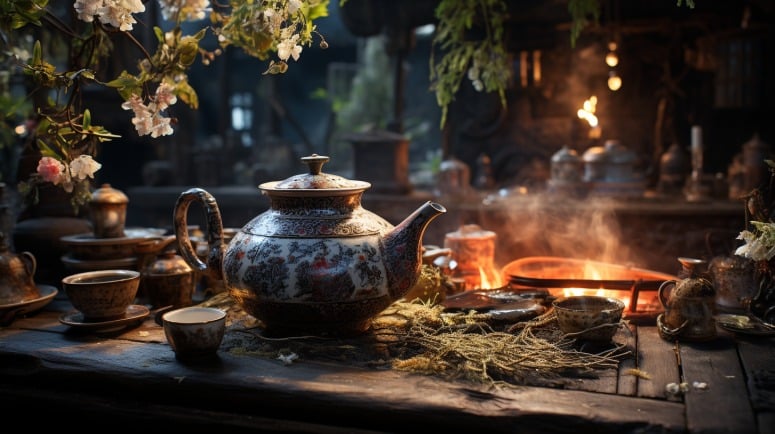
Steeped in Tradition, Brewed for Perfection
Alrighty, my tea aficionado friends, you’ve fully steeped in an ocean of tea knowledge. From stainless steel infusers to tea steepers, we’ve brewed a storm in a teapot together! Remember, opting for loose leaves over typical tea bags isn’t just a tribute to authenticity, but it also gifts you a stronger flavor and a far richer hot tea experience. And trust me, these loose leaves unmatched in the flavor department by anything inside a pack of lower quality tea.
With tea filters, every single serving brew is crystal clear. And when you feel adventurous, herbs and a high-quality tea diffuser will unlock a whole universe of flavors in your mug. That’s the beauty of tea – it’s a constant journey of flavors, a never-ending saga.
Sometimes, investing in the best tea infusers can dramatically change your brew game, making the difference between, well, just a cuppa and the Best cup. And remember, always pour hot water over your leaves or infuser – not the other way around. It’s like greeting the leaves before a shared dance.
When independently evaluated, small holes in the infuser are brilliant for bonding optimally with small particles to extract every bit of the essence – that is the secret to a brew that screams perfection! However, just like mugs come in various sizes, so do tea infusers. A top pick for many is the one with the perfect balance of strong construction, small holes, and enough room for leaves to bloom.
As we round off this chit-chat, remember that tea mirrors life – it’s all about the right balance. A balanced flavor profile, the right tools, and the patience in brewing – the key to a blissful tea experience! So, go on, pour that love-packed cup of tea and enjoy the magic it weaves. Tea-riffic times, ahoy!
Cheers till we meet again on another tea-strainer adventure!
What’s the advantage of using a tea strainer over just a tea bag?
When you use a tea strainer with loose leaf tea, you are allowing the tea leaves more room to expand and release their full flavor. In contrast, tea bags contain small tea particles that have less flavor to begin with. Additionally, using a tea strainer lets you control the strength of your tea, and it’s the greener choice since it reduces waste.
How does a tea infuser differ from a tea strainer?
While both are used for brewing loose leaf tea, they are used at different steps of brewing. A tea infuser is used to contain the tea leaves while they are steeping in hot water. A tea strainer, on the other hand, is set over your cup or mug to catch any leaves that might escape the infuser when you pour the tea.
What should I consider when choosing my tea brewing tool?
Your choice of tool depends largely on your brewing habit and lifestyle. If you are a casual, cup-a-day drinker, a small, single-serve infuser or tea ball might be perfect. If you enjoy multiple cups or often serve guests, consider a teapot with an infuser or a larger steeping tool.
What are some pro tips for brewing the best cup of tea?
For the best brew, always use fresh water since re-boiled water often makes a flat cup of tea. Pre-warm your cup or teapot to maintain the temperature of your tea while brewing. Stick to suggested steeping times to avoid a bitter brew.

